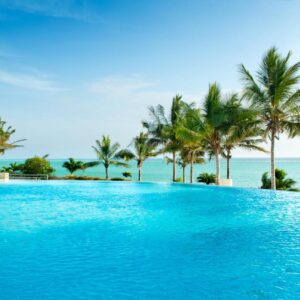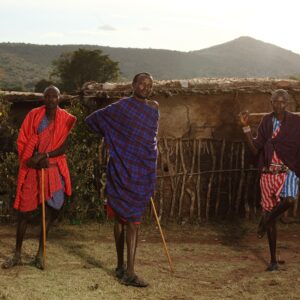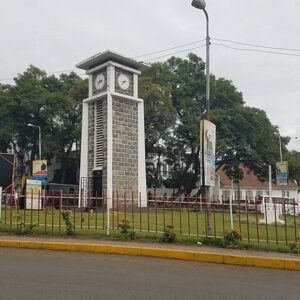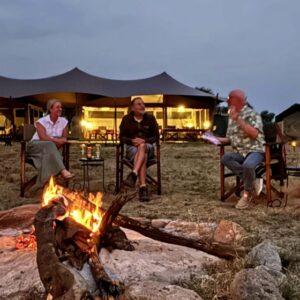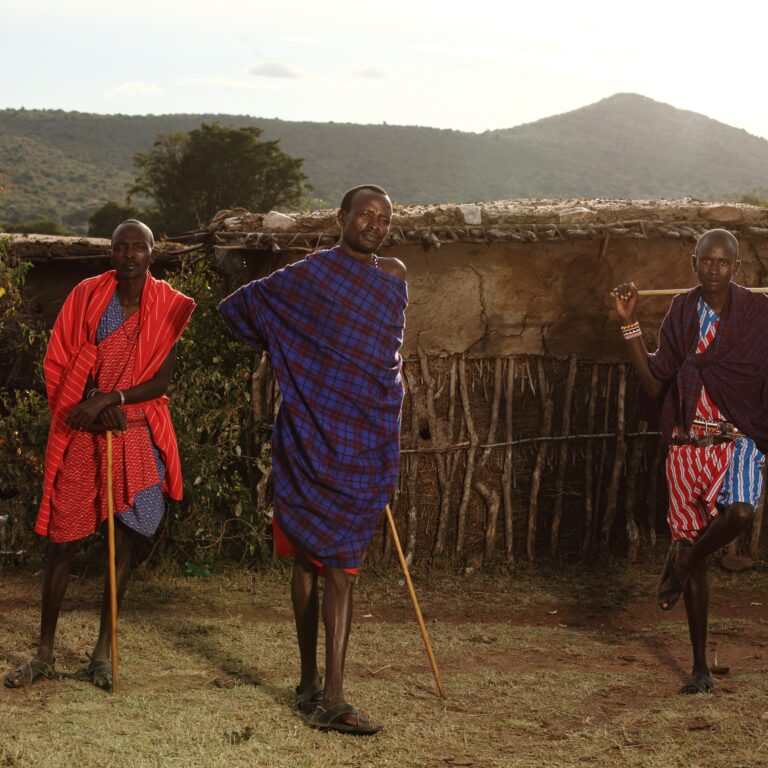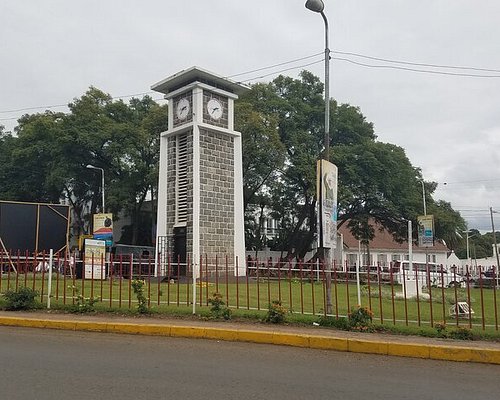Of all the majestic creatures that roam the African wilderness, the leopard stands apart. Elusive, graceful, and incredibly powerful, this solitary hunter embodies the very essence of stealth and mystery. A leopard sighting on safari is often considered the pinnacle of a game drive – a testament to a keen-eyed guide and a stroke of pure luck. Their rosetted coats offer perfect camouflage, allowing them to vanish into dappled light or dense foliage, making them a true “ghost of the bush.” While these magnificent felines are found across much of sub-Saharan Africa, some destinations offer a significantly higher chance of glimpsing them. If seeing a leopard is high on your safari wish list, consider focusing your journey on these prime locations, from the iconic parks of Tanzania to the famed reserves of Southern Africa.
Tanzania, a jewel in East Africa’s safari crown, boasts several exceptional locations for leopard sightings, particularly in its Northern Circuit. The diverse habitats, from vast plains to dense riverine forests, provide ideal environments for these adaptable predators.
1. Serengeti National Park
The undisputed king of African safari destinations, the Serengeti is also legendary for its healthy leopard population. Its expansive, open plains, punctuated by rocky outcrops (kopjes) and dense riverine woodlands, offer a perfect mosaic of hunting grounds and resting spots. Why is it excellent? The central Serengeti, especially the Seronera Valley, is often cited as one of the best places in Africa to spot leopards. The Seronera River’s permanent water and lush vegetation attract abundant prey, drawing in these top predators. Leopards here are often seen draped over acacia branches, utilizing the elevated position for both rest and surveillance. Guides in this area are highly skilled at spotting them, often looking for a flick of a tail or a tell-tale silhouette against the sky.
Best time to visit. Year-round, but sightings can be slightly easier during the dry season (June-October) when vegetation is sparser. What to expect. Look for them in trees, particularly flat-topped acacias, or slinking through tall grass at dawn or dusk. They are solitary, so a single leopard is the most common sighting, though you might see a mother with cubs.
2. Tarangire National Park
Known primarily for its enormous elephant herds and ancient baobab trees, Tarangire also holds a respectable population of leopards. The park’s diverse landscapes, including riverine forests, swamps, and open woodlands, provide ample cover. Why is it excellent? While perhaps not as famed for leopards as the Serengeti, Tarangire offers good opportunities, particularly along the Tarangire River and its tributaries. The dense foliage provides excellent camouflage, making sightings especially rewarding when they occur. Best time to visit. Dry season (June-October) is optimal as animals congregate around the shrinking water sources, including leopards following their prey. What to expect: Patience is key. Your guide will scour trees and dense thickets.
3. Ruaha National Park
Tanzania’s largest national park, Ruaha, in the country’s southern circuit, offers a wilder, more remote safari experience. It boasts a thriving ecosystem with significant predator populations, including a healthy number of leopards.
Why it excellent? The park’s rugged terrain, rocky kopjes, and dry riverbeds lined with dense vegetation (especially in areas like the Mwagusi Valley) create ideal leopard habitat. Less tourist traffic means more authentic and often undisturbed sightings. Best time to visit. The dry season (July-October) is best, as the thinning vegetation and reliance on the Ruaha River’s diminishing water sources make animals, including leopards, more concentrated and visible. What to expect: A more adventurous tracking experience in a vast, unspoiled wilderness.
4. Lake Manyara National Park
A relatively small but incredibly diverse park nestled beneath the Great Rift Valley escarpment, Lake Manyara is perhaps most famous for its tree-climbing lions. However, it also has a healthy leopard population. Why it excellent? While tree-climbing leopards are rarer than their lion counterparts, the dense groundwater forest and acacia woodlands provide superb cover for these big cats. The unique habitat often leads to sightings in unexpected places. Best time to visit: Year-round, but the dry season can make spotting slightly easier. What to expect: Due to the thick vegetation, leopards in Manyara can be particularly elusive. A sighting here is a special bonus.
5. Ngorongoro Crater
This natural wonder, a vast volcanic caldera, is renowned for its incredible density of wildlife. While lions, hyenas, and rhinos are frequently sighted, leopards also call the crater home, albeit in fewer numbers and often more hidden. Why it’s excellent? Leopards tend to stick to the forested rim and the more wooded areas within the crater, particularly around the southern and eastern slopes. The concentration of prey animals within the crater certainly supports them. Best time to visit. Year-round. What to expect. Leopards here are typically more challenging to spot than lions or cheetahs, but skilled guides know their preferred territories. Look for them in the dense woodlands or emerging from cover during the cooler hours.
6. Selous Game Reserve (now Nyerere National Park)
Located in Southern Tanzania, the vast Nyerere National Park (formerly the northern part of Selous Game Reserve) is one of Africa’s largest protected areas. Its diverse landscapes, including the mighty Rufiji River, make it a fantastic destination for predators. Why it excellent? Nyerere offers a genuinely wild and raw safari experience with healthy populations of all major predators, including leopards. The varied habitats, from woodlands to riverine areas, provide excellent hunting grounds. Best time to visit. Dry season (June-October) for higher concentrations of wildlife around permanent water. What to expect. Along with game drives, Nyerere is famous for its boat safaris, offering a unique perspective and potential for waterside leopard sightings, particularly if they come to drink or have a kill near the river.
7. Katavi National Park
One of Tanzania’s most remote and untouched parks, Katavi offers an authentic wilderness experience for the seasoned safari-goer. Its isolation means fewer visitors and undisturbed wildlife behavior. Why it’s excellent? Katavi’s seasonal floodplains, dense woodlands, and the Katuma River, which dwindles to a few muddy pools in the dry season, create bottlenecks for wildlife. This attracts predators, including a healthy leopard population. Best time to visit. The very end of the dry season (September-October) when animals are concentrated around the few remaining water sources. What to expect. A safari here is for those seeking a true adventure. Leopard sightings are not guaranteed, but are incredibly rewarding in this pristine environment.
Beyond Tanzania: Other African Leopard Hotspots
While Tanzania offers superb opportunities, several other African countries are renowned for their leopard sightings.
8. Kruger National Park, South Africa (and its Private Concessions)
Often considered the gold standard for reliable Big Five sightings, Kruger National Park is one of the best places in Africa to see leopards. Its vast size and diverse habitats support a large population. Why is it excellent? The park’s southern region, particularly areas around Skukuza, Lower Sabie, and Satara, is well-known for good leopard sightings. However, for a truly exceptional and almost guaranteed leopard experience, the private concessions adjoining Kruger National Park (like Sabi Sand Game Reserve, Thornybush, Timbavati) are unparalleled. These reserves have a long history of habituating leopards to vehicles, meaning the cats are comfortable enough to allow close, prolonged observations, often resulting in incredible photographic opportunities. Off-roading is also permitted in private reserves, allowing guides to follow animals into denser bush.
Best time to visit. Year-round, but the dry winter months (May-October) often offer better visibility due to sparser vegetation. What to expect: In private concessions, you’re likely to see leopards moving, hunting, or feeding on kills, sometimes even at night with spotlights.
9. Maasai Mara National Reserve, Kenya
Kenya’s most famous reserve, an extension of Tanzania’s Serengeti, is a powerhouse for wildlife viewing, including healthy populations of all big cats.
Why it’s excellent. The Mara’s combination of open plains, riverine forests (especially along the Mara and Talek Rivers), and scattered acacia trees provides excellent habitat for leopards. Many individual leopards in the Mara are well-known to guides, increasing the chances of finding them. The private conservancies bordering the Mara (e.g., Mara North, Olare Motorogi) often offer similar benefits to South African private reserves, with fewer vehicles and more intimate sightings. Best time to visit. Year-round, but July-October during the Great Migration offers a dynamic environment with abundant prey. What to expect: Excellent opportunities for seeing leopards in trees or stalking through tall grass.
10. South Luangwa National Park, Zambia
South Luangwa is often dubbed “the Valley of the Leopard” for a very good reason – it boasts one of the highest densities of leopards in Africa. Why it’s excellent? The park’s unique riverine environment, with its Luangwa River and numerous oxbow lagoons, supports a rich ecosystem that leopards thrive in. The lodges and guides here are incredibly skilled at tracking these elusive cats, and night drives (permitted in Zambia) significantly increase your chances of seeing them active.
Best time to visit. Dry season (May-October), especially towards the end when water sources shrink, concentrates animals. What to expect. Exceptional daytime and nighttime sightings. The leopards here are often very relaxed around vehicles due to consistent, respectful guiding.
11. Okavango Delta, Botswana
Botswana’s vast, watery wonderland is a premium safari destination, offering stunning landscapes and incredible wildlife, including a healthy leopard population. Why it excellent? The diverse habitats of the Delta, from permanent waterways and floodplains to dense island thickets, provide perfect cover and abundant prey for leopards. Areas like Moremi Game Reserve and various private concessions within the Delta are particularly strong.
Best time to visit. Dry season (May-October), when water levels recede, concentrates animals around the remaining water and makes tracking easier. What to expect. Both day and night drives are common, increasing your chances. Leopards here are often seen utilizing the varied terrain for hunting and resting. The Elusive Charm: Maximizing Your Chances
Regardless of where you go, remember these tips for leopard sightings:
Choose Experienced Guides: A top-notch guide is your greatest asset. Their knowledge of leopard behavior, territories, and tracking skills is paramount. Patience is a Virtue. Leopards are masters of camouflage. You often need to spend time slowly scanning trees and dense bush. Look Up. Leopards frequently hoist their kills into trees to protect them from scavengers like lions and hyenas, and they often rest on branches.
Early Morning & Late Afternoon. Like most predators, leopards are most active during the cooler hours of dawn and dusk. Night drives (where permitted) offer a unique opportunity to see them hunting. Listen to Alarm Calls. Baboons, monkeys, and impala often give alarm calls when they spot a leopard, alerting your guide.
A leopard sighting is a privilege, a fleeting glimpse into the secretive life of one of Africa’s most beautiful and enigmatic creatures. By choosing the right destination and staying patient, you significantly increase your chances of connecting with this remarkable member of the Big Five.
Why are leopards so elusive? Leopards have a solitary and secretive nature, making them masters of camouflage. Their spotted coat allows them to blend seamlessly into their surroundings, making them challenging to spot, even for experienced safari-goers.
When is the best time to see leopards in Africa? Leopards are active both day and night. But the chances of sightings often increase during early mornings and late afternoons when they are more likely to be on the move or engaged in hunting activities.
Are leopards dangerous to humans on safari? While leopards generally avoid human contact, it’s crucial to follow safety guidelines during a safari. Experienced guides prioritize the safety of visitors and ensure a respectful distance is maintained when observing wildlife.
What other wildlife can be seen in conjunction with leopards on safari? Africa’s diverse ecosystems offer the opportunity to witness a wide array of wildlife. Including lions, elephants, giraffes, and various bird species. Safaris provide a holistic experience of the continent’s natural beauty.
Conclusion: Best Places to See Leopards in Africa
Embarking on a leopard safari in Africa is a thrilling adventure that unveils the mysteries of these enigmatic creatures. Whether in the Serengeti, Okavango Delta, South Luangwa, Maasai Mara, or Kruger, each destination offers a unique perspective on the lives of leopards in the wild. With proper guidance from experienced safari professionals, you can witness these elusive felines in their natural habitats, creating memories that will last a lifetime.

